
Welcome to the first day of the #BlogchatterAtoZ challenge!!!!!!
In the course of 26 days, together we will explore some known and unknown facts about Uttarakhand –The Abode of Gods.
So, let us begin…….
Every festivity in India is marked with various forms of auspicious floor decorations.
It has various names and variations in the art forms based on the Indian state it is associated with such as Rangoli, Bhuggul, Aipan, Satiya, Chowk Pooran etc. These art forms are an immensely important part of the social, religious and cultural fabric.
Today as we launch the #BlogchatterAtoZ challenge -2020 let us begin this delightful occasion with the auspicious Aipan Art –the traditional art form of Uttarakhand, which finds its place in every celebration in Uttarakhand.
‘Aipan’ is derived from the Sanskrit word ‘Arpan,’ which means ‘dedication’ i.e. an offering to the Gods.
The traditional mixture used for it is ‘geru’ a red colored ochre or filtered red soil used as the background and ‘biswar’ a paste of raw rice to draw the particular design using the last three fingers of the hand. The design comprises of lines, dots and various patterns with special meaning for each design.
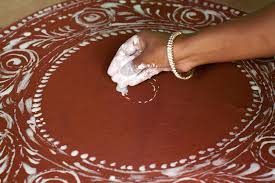
Designs could vary from representation of Hindu deities, Mountain Gods, Elements of nature and social life.
Each motif displays the amalgamation of cultural, spiritual and social heritage.
The floral motifs or some other appropriate design is drawn with combination of ‘Vasudhara’ the vertical lines. They are made by dripping the rice solution using the Anamika i.e. the Ring finger. These are drawn in the groups consisting of lines in odd numbers like 5, 7, 9 or 11.
This type of design with the Vasundhara i.e. the vertical lines are drawn on the doorsteps, place of worship, structure drawn around the Tulsi i.e. (a plant which has great religious significance in India).


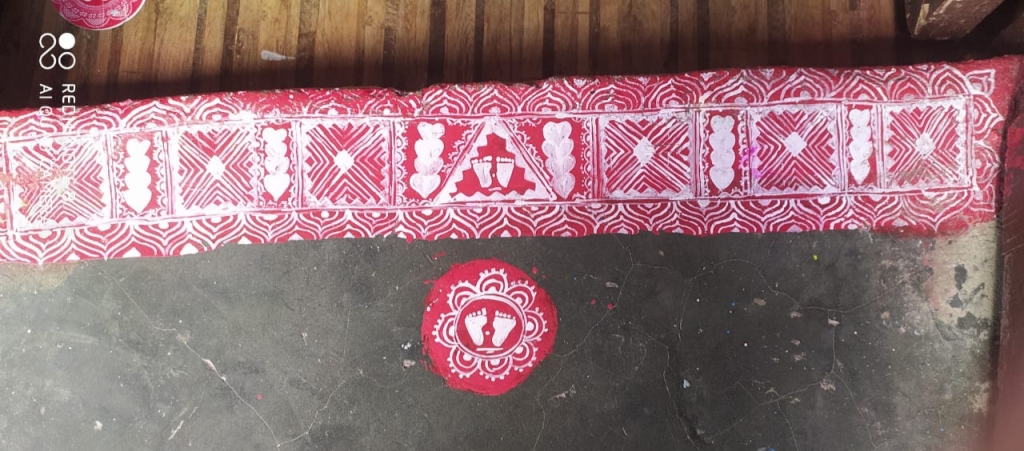

Swastik Aipan:-

All four arms of the Swastik inspire us to move forward towards success.It is considered an auspicious symbol for worship.It also represents creation and progress. All these group or block of lines in traditional Aipan should end with dots.
Lakshmi Peth:-
This aipan is drawn at the place of worship of Goddess Lakshmi,the goddess of wealth and prosperity, particularly on Deepawali (Festival of lights).

Lakshmi Padchinha:-
On Deepawali day, footprints of Goddess Lakshmi are drawn from the main entrance of the house to the place of worship inside the house.

Astadal Kamal:-
This aipan is drawn at the place where ‘Havan’(Ceremonial fire) is performed. It is an octagonal geometry with lotus petals and a swastik is drawn at the center.
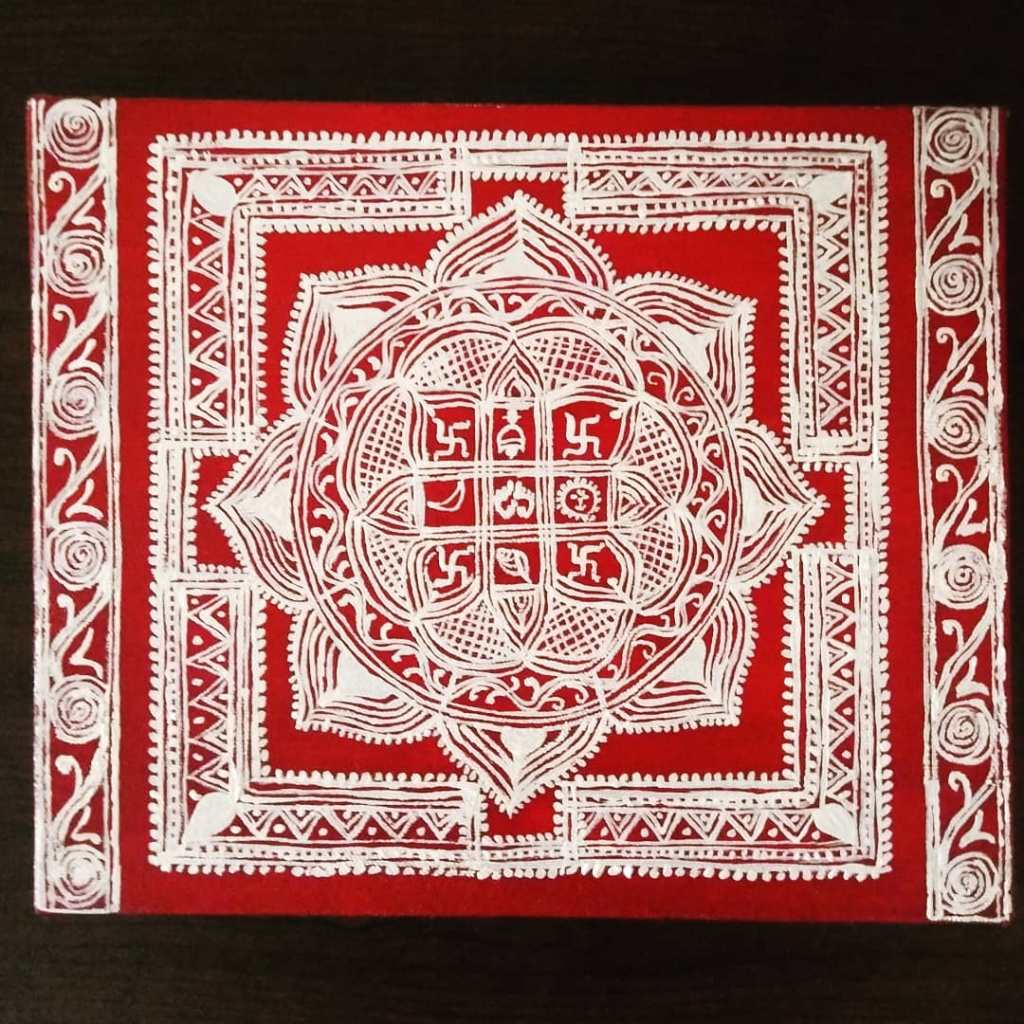
Dhuliarghya Var Chauka:-
The bridegroom is made to stand on the Chauka when introduction and welcome of bridegroom is performed while chanting vedik mantras.
Janeu ceremony:-
It is drawn at the place of ‘Janeo’ or threading ceremony. This drawing has 15 dots in the center. It is also drawn when the ‘Janeo’ is changed on every Raksha Bandhan every year.(Festival when a sister ties a thread (rakhi) on the wrist of her brother seeking his protection). In this chowki seven stars within a hexagon, form the main section. Here the seven stars represents the “Sapt-Rishis”. Floral designs with dots are drawn around it.
Namkarna Chauki:-
Namkrana ceremony (naming ceremony)of a newborn is held on the eleventh day. This is the first time when the baby is exposed to the sun (Surya darshan). This is drawn in the courtyard where the ceremony is observed.
AIPAN BEING PREPARED FOR THE AREA OF WORSHIP:-

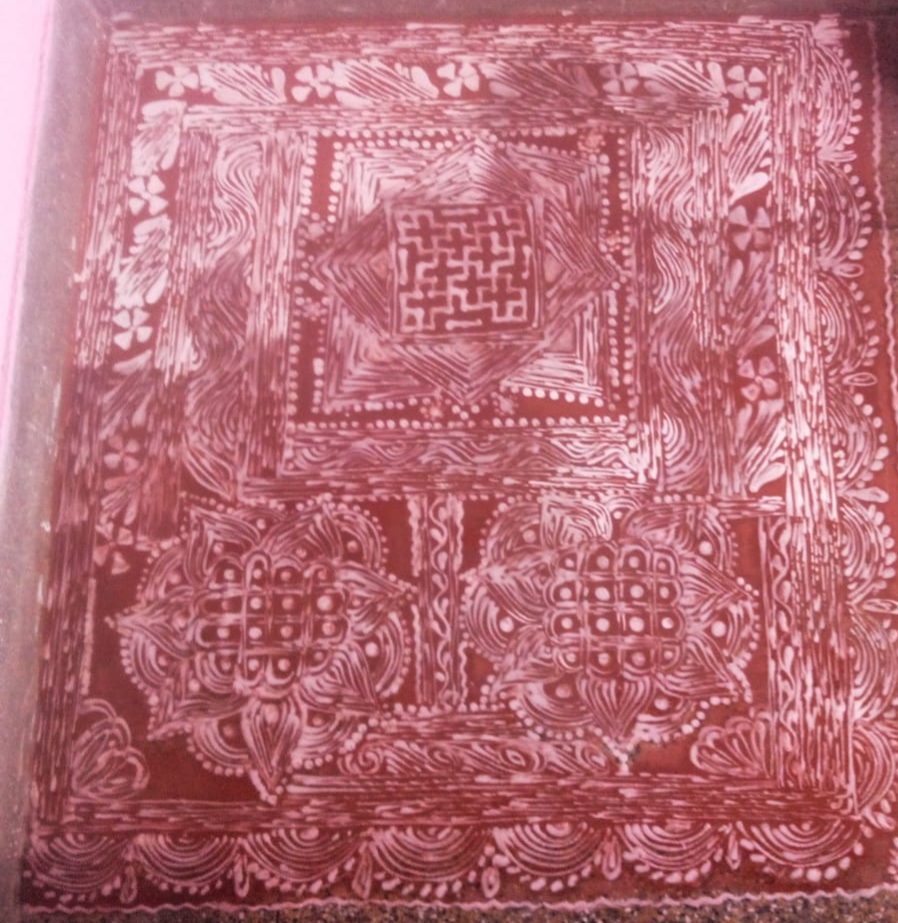
AIPAN WITHOUT DOTS:-
It is drawn on the 12th day of someone’s death (Peepal Pani or Shanti Path). On the third day of death, these Aipan without dots are removed and fresh aipan with dots are drawn to show end of mourning period.
There are numerous other designs and specific names for motifs drawn for various ceremonies.
Over the years modernization has taken over the traditional art forms and rituals and most of this knowledge is lost.(While collecting information for this blog post I realised this even more) The preparation of Biswar and Geru has been replaced by paint. Aipan stickers are also available now.
The beauty of this traditional art form has been replaced by quick and easy solutions.The awareness and knowledge about the proper technique and role of each line,dot and design is bare minimum in the present generation.
Some individuals as well as organizations are trying to revive this traditional art form as well as generate revenue by creating new and trendy products.(as shown below)
Example, Project Aipan :::: https://www.youtube.com/watch?v=H1cacc_C-_4
(Items like bookmarks,diary covers,nameplates,decorative items etc.)
In this time of lock down why not give wings to your artistic skills. Learn a new art form!!!!
MODERN AND EASY WAY TO MAKE AIPAN:::
Author’s Note:- Information and photographs have been widely sourced from various websites as well as my personal contacts.Please feel free to inform me of any misinformation or any violation.My email id pashmeenachowdhary@gmail.com
References for information and photographs credits :
- Websites:-
- Google search engine
- Mrs. Ranjana Bisht
- Dr. Manisha Sanguri Jalal
# This is the first post for #BlogchatterA2Z challenge. My theme is Uttarakhand-The Abode of Gods .
# You may access my theme reveal here::::: https://pashmeenachowdhary.home.blog/2020/03/16/blogchatter-a-to-z-challenge-2020-theme-reveal/
# Do share your links for quick access…Would love to read…. See you around!!!!!

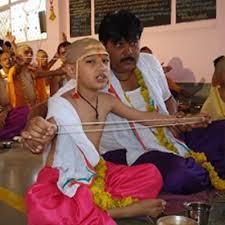
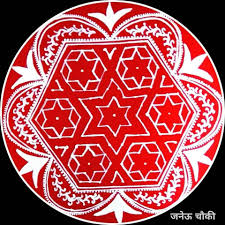



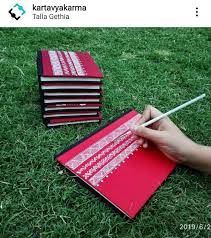
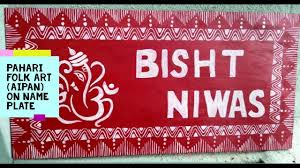
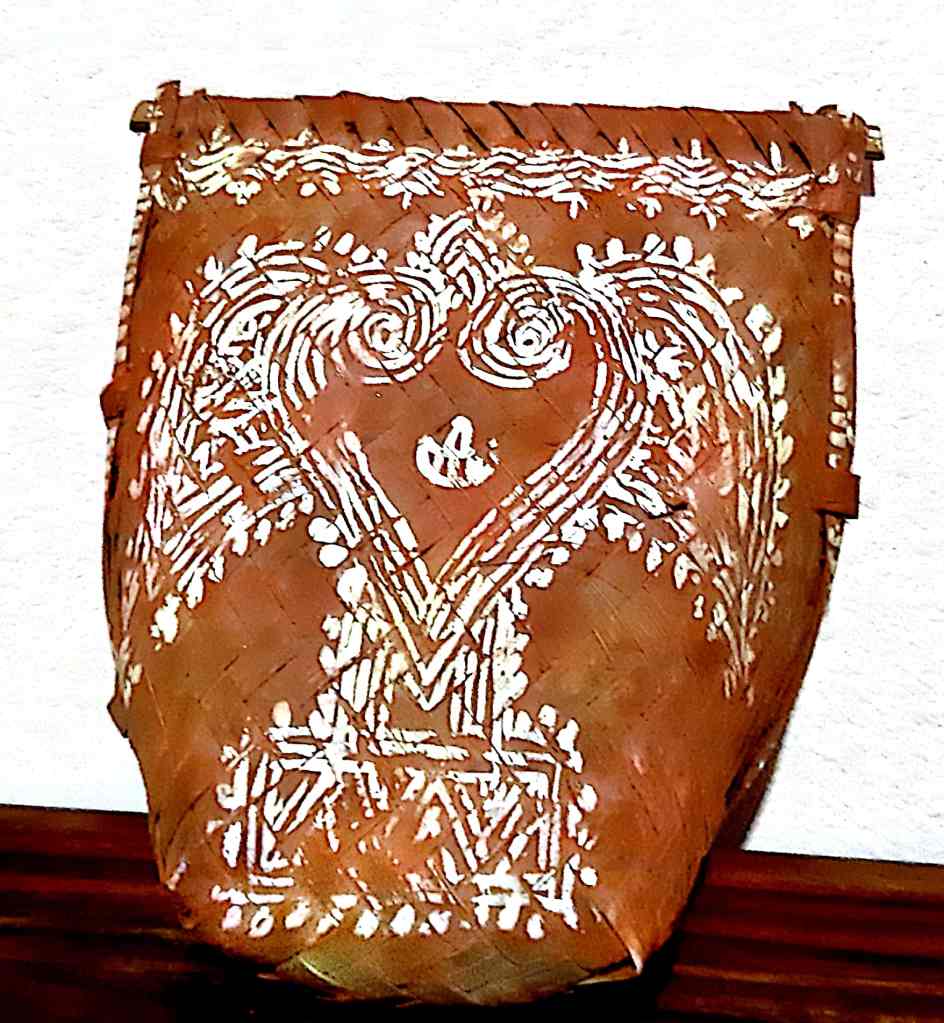
wow amazing..this is something new to me..and I have to say that India has such enriched traditions and cultural values. I love all the designs and hats off to you for sharing it with proper details and video.
LikeLiked by 1 person
Thanks a lot Surbhi that you loved it.Hope I am able to share a lot of new information with you.See you around.
LikeLike
Usually I make Rangoli only once a year and that is for Diwali… But being brought up in south India where the “muggu” is very famous… Drawn with just the rice powder… I have a soft corner for these kind of art forms… I have seen these red background forms earlier but did not know the background…. Nice read… Keep posting!!
LikeLiked by 1 person
Thanks a lot Ira.Your words about ‘Muggu’ also added to the information about another form of Aipan. India never fails to enthrall. Hope to keep you engaged with my other posts too.See you around.
LikeLike
I had never heard of Aipan art before- how interesting it is! It will be fun to explore the traditions of Uttarakhand through your posts.
LikeLiked by 1 person
Thanks a lot Noor for finding it interesting.I have always loved your posts.See you around.
LikeLiked by 1 person
I do hope you’ll come check out my A-Z posts too, in that case!
LikeLiked by 1 person
Yes,sure..Am in the process of exploring.
LikeLiked by 1 person
Loved the post Pashmeena. Aipan is Arpan, wow. So beautiful. I thnk we all have this kind of rangoli tradition in every region of India. We also draw it at any auspicious occasion in house. Loved the way you had your research and represented it. Will be back again here.
LikeLiked by 1 person
Thank you so much Swarnali..Thanks for your appreciation.India is full of so many traditions and hidden aspects.Will be exploring your blog too soon.See you around.
LikeLiked by 1 person
👍👍🙂🙂
LikeLiked by 1 person
Can i have the link to your site..It was not available..Thanks
LikeLike
https://thelifeandlightblog.com/2020/04/01/awaken-the-story-within/
LikeLike
Absolutely amazing! Rangoli in an important part of our culture in Maharashtra.. Really looking forward to your AtoZ posts!
LikeLiked by 1 person
Thanks a lot Archana..I have seen people in Maharashtra make Rangolis in a matter of few seconds..Love them immensely..India never fails to enthrall..See you around..Thanks for visiting..
LikeLike
Thanks a lot Archana for visiting my blog.Yes,I saw people creating rangolis in a matter of few seconds in Maharashtra.Loved them immensely.See you around.
LikeLike
I love to read about local art n traditions. This was so informative n entertaining. Will follow to know more about Uttarakhand.
LikeLiked by 1 person
Thank you so much for visiting.. Hope to keep you engaged with my posts.. See you around..
LikeLike
Can i have thr link to your post?
LikeLike
I love to read about local art n traditions. This was so enriching to know about. Will look forward to a deepdive into Uttarakhand in your series.
LikeLiked by 1 person
Thank you so much..Hope you find the series interesting..
LikeLike
Thanks a lot…See you around..
LikeLike
Those are such beautiful, intricate patterns. It’s such a pity that so much has been lost over the course of years. Thanks a lot for sharing it with us. 🙂
LikeLiked by 1 person
Thanks a lot for the appreciation..See you around..Will check your post soon.
LikeLike
Never heard of this form of Rangli. In Maharashtra, we also have the tradition of putting rangoli in front of their door step or open space. later due to flat system, sticker rangolis came into existence. Indian culture is so rich and vibrant that we never fall short of learning.
LikeLiked by 1 person
Thanks a lot Alpana…You ate right India is so vibrant ..Thanks for visiting .See you around..
LikeLike
Such a detailed and well laid out post. You have added much to our knowledge and the amount of research in your work is commendable.
LikeLiked by 1 person
Thank you so much Sonia for the appreciation..Love the way you write..See you around…Best wishes
LikeLiked by 1 person
Very interesting and beautiful!
Black and White (Words and Pictures)
LikeLike
Truly fascinating! I admire anyone who is able to create the various Aipan artworks, as it would take a lot of time and patience to do.
I’m doing A2Z on essential oils at: http://tao-talk.com/2020/04/01/a2z-2020-essential-oils-a-argan-carrier-oil/
LikeLike
I love making rangoli with colours on various auspicious occasions. So it was no wonder when I felt a strong desire to learn the art of making Aipan. I fell in love with the designs and the meaning behind them.
Very informative Pashmina!
LikeLiked by 1 person
Thanks a lot for reading it so thoroughly…Hope to see your creations soon..Hope you to keep you interested…Will be visiting yours too..Thanks..
LikeLike
What a beautiful post. I really loved this. I am so eager to know about people from different regions of India and their traditions.
LikeLiked by 1 person
Thank you so much..If you like to read about various regions then most of my posts will attract you..Thanks..See you around..Will visit yours soon..
LikeLiked by 1 person